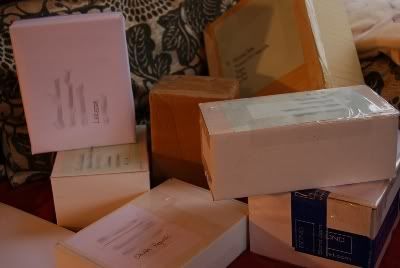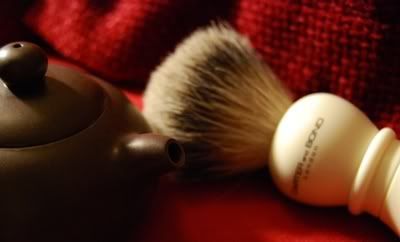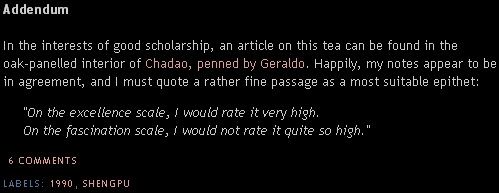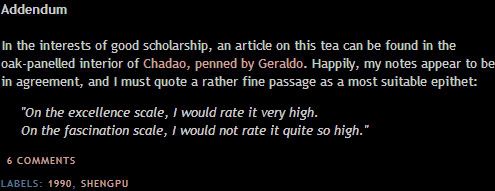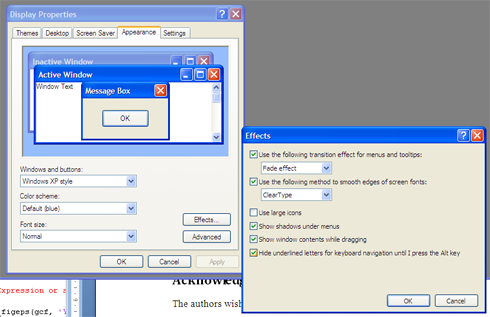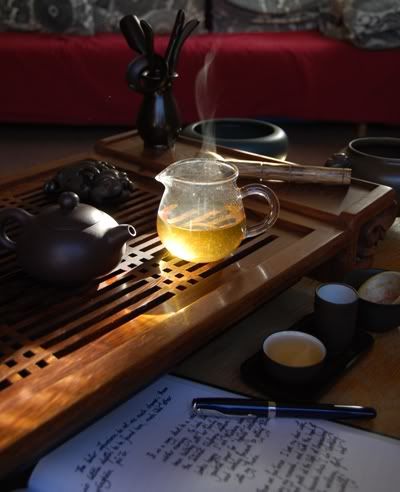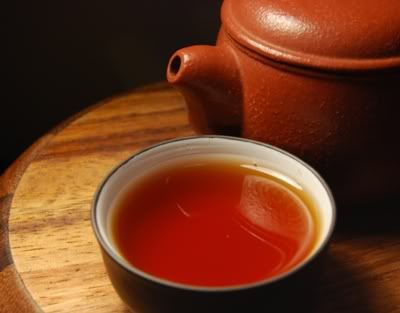So, then, dancong [single bush]. Also known as "Fenghuang" [phoenix] tea, after the mountains down in Guangdong, hence the surfeit of brands such as "Super Phoenix", "Imperial Phoenix", and "I Can't Believe It's Not Phoenix".
Imen has a whole ream of interesting information on this genre of tea, for the curious reader.
I have a fairly strong set of prior assumptions when it comes to dancong:
i. Dancong is fruity and floral. It can be pleasant, but is usually fairly simple. It lacks the complexity and enduring appeal of, say, Wuyi yancha or pu'er.
ii. Dancong is fairly homogenous. Once past a certain level of quality, it all tastes the same to me. I can't distinguish a prize-winning uber-dancong at $200/1 mg from a good-quality, reasonably-priced $30/100g.
iii. It's best in the first few infusions, and then it tails off into a gently sweet warm water without developing or evolving into anything too exciting.
Dancong is, to me, a pretty girl who turns out to be horridly boring in conversation.

Don't get me wrong, I like dancong very much. However, I consider it a "light and pleasant" tea to enjoy on a fresh week-end morning, rather than an engaging, exciting voyage of discovery as some other teas can provide. The above are just my personal foibles, if you will.
The subject of this article, the Milanxiang [honey-orchid scent] is from Imen's new foray into the world of on-line tea selling, with which I hope to challenge my prejudice. It is a "gold medal winning" tea which is a statement that, coming from most other people, would make me roll my eyes, given that it's hard to substantiate and even harder to quantify. However, Imen knows her stuff and has been a good writer for so long, that it must mean something in this case.
The leaves are long, as you'd hope for a dancong, and have the fresh scent of fruits that you would expect.
Unlike many dancong, this one has a vibrant energy that is felt on contact with the lips and tongue. It has a smooth honey beidixiang [initial scent in the aroma-cup], which, while pleasant, doesn't endure. It's an aptly-named tea, at least.
The flavour is sweet and full, with a gentle, warming chaqi that flushes my neck. Against all odds, this dancong exhibits a huigan that leaves the mouth watering.
By the fifth infusion, it's all over, and we're into the familiar territory of sweet, fruity warm water.

Overall, this is one of the better dancong that I have had the pleasure of encountering. It didn't really shake my assumptions about the genre, but it was a treat finding out nonetheless.
 Many thanks to CB for this most unusual green tea, sold by The Whole Leaf where it goes for about $7/oz. I've been meaning to post this review for just under two months, and a steady stream of tea reviews landing in my inbox from CB herself prompted me into action!
Many thanks to CB for this most unusual green tea, sold by The Whole Leaf where it goes for about $7/oz. I've been meaning to post this review for just under two months, and a steady stream of tea reviews landing in my inbox from CB herself prompted me into action!




